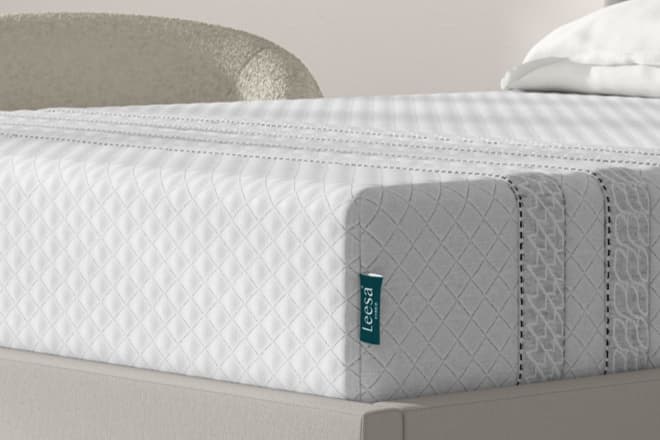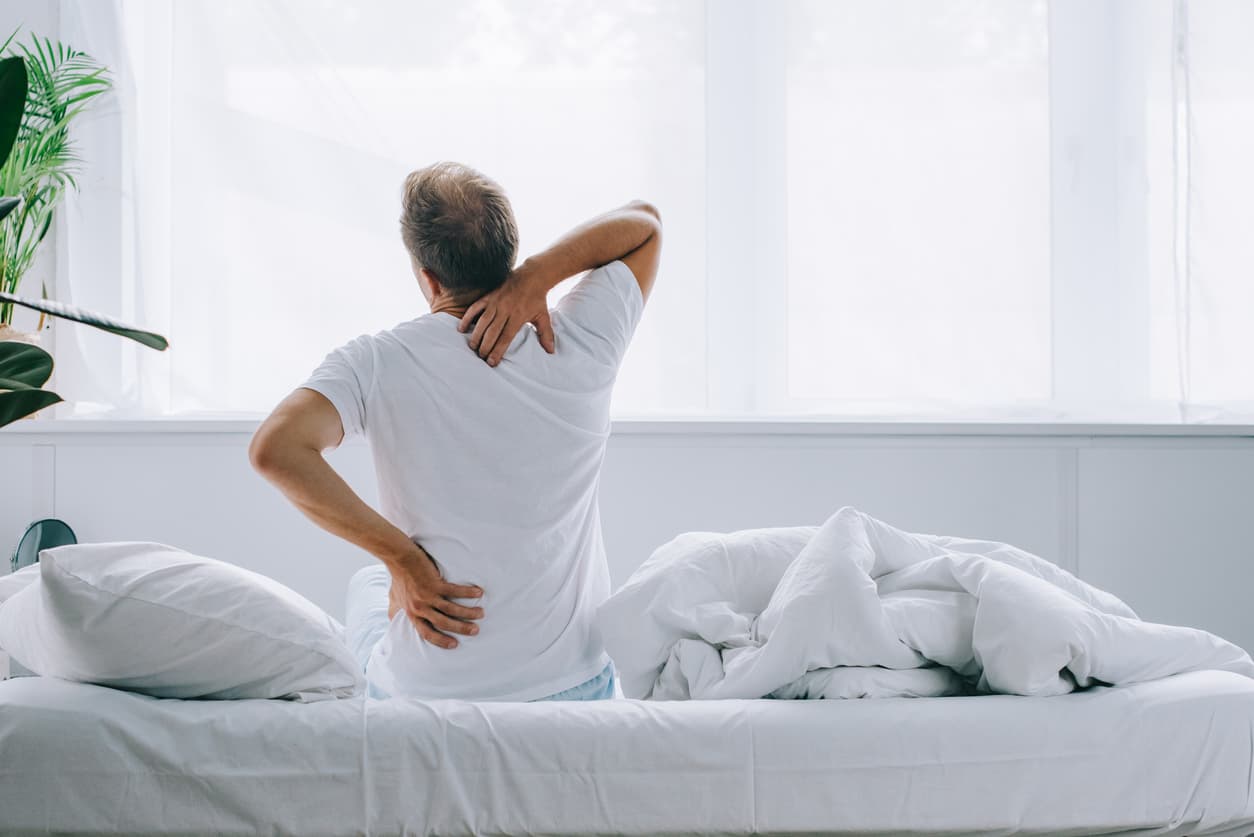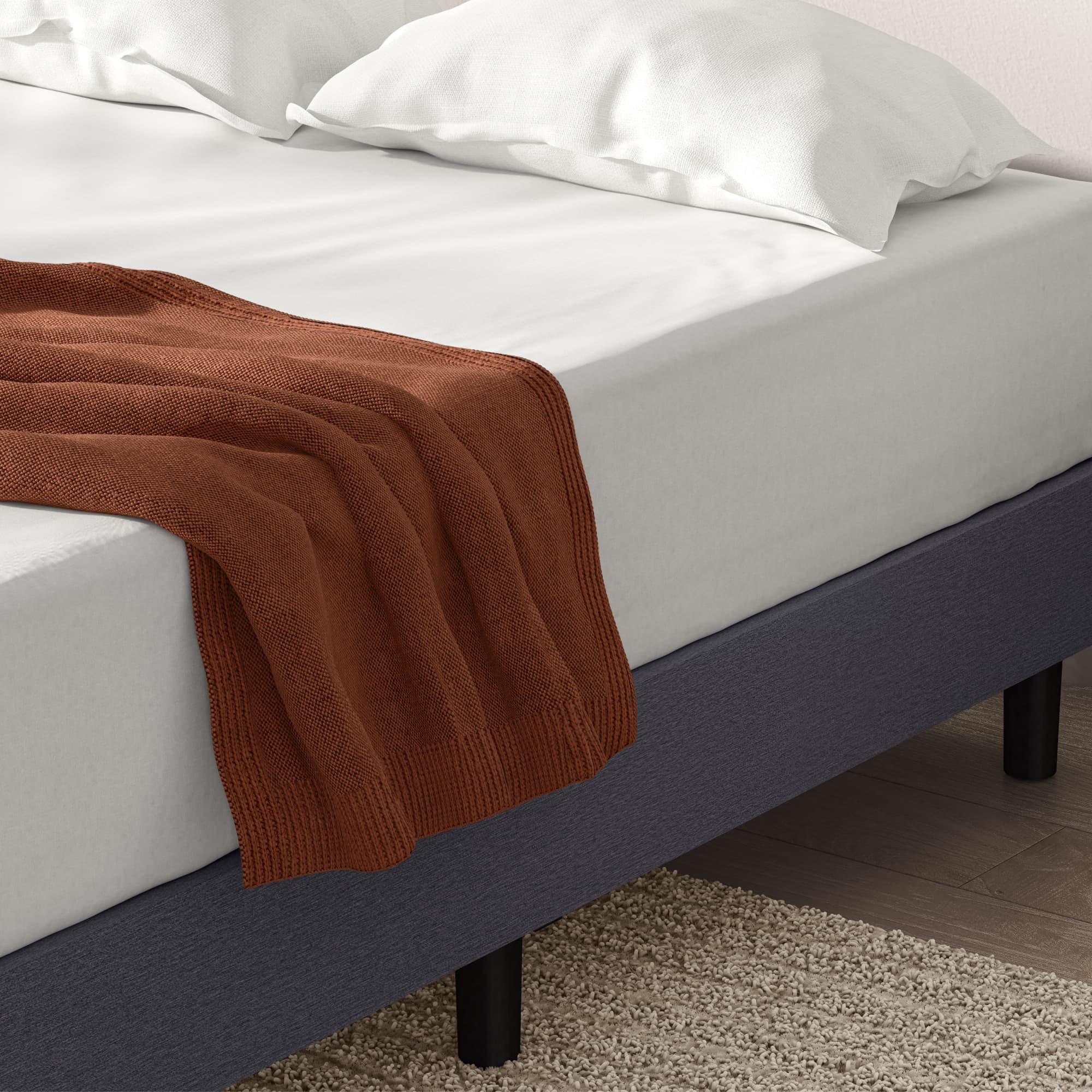You can do this! Getting rid of bed bugs doesn't require much effort; all it takes is patience and elbow grease, right? Kind of.
You will have a much better chance of successfully eradicating the bed bugs if you find the infestation early and act quickly to control it. Bed bugs, however, can be resistant to insecticides, your mattress may be too old and worn to handle the sheer number of bedbugs that have recently moved in, or you may be horrified by the appearance of these things (we don't blame you!) making the entire process unmanageable.
Regardless of your situation, we've given you all the tips you need to contain your bed bug problem by yourself, how to successfully pick out your next mattress, and how to recognize when it's time to call in the pros.
What Are Bed Bugs?
A bed bug is a tiny, brownish-red, flat, wingless insect that feeds on human and animal blood. Sounds gross, right? Buckle up. Despite not being able to fly or jump, bed bugs crawl swiftly. Around midnight, they emerge from hiding, and around 5 am, they retreat into their hiding spots. Hotel rooms, homeless shelters, and furnished apartments are most at risk of being infested with bed bugs, though they will go wherever their host can be found.
Usually, these creepy crawlers ride along with your luggage, clothes, bedding, or furniture. Be warned: if you need to remove bed bugs or volunteer to help someone who has them, be ready for a challenge. Bed bugs are notoriously difficult to force out, though it is not impossible!
Where Do Bed Bugs Hide?
You'll need to take a deep breath for this one. During daylight hours, or any time bed bugs are not feeding, they can hide anywhere. A bed bug's favorite and most common hiding place is in linen, seams, and mattress tags. You may also find them nestling into cracks in your headboards and bed frames. They can spread throughout the room if you have a significant infestation of bed bugs.
Bed bugs may tiptoe into seams of furniture, particularly between cushions and folds, in electrical outlets, in loose wallpaper, or behind hanging decorations in your room. The corner of the room where the walls meet the ceiling is also a popular community spot. A bed bug's size is estimated to be approximately the same width as a credit card. Therefore, every crack you can slip a credit card into can conceivably accommodate a bed bug.
What are the Signs of Bed Bugs?
The first sign that you may have bed bugs is waking up with red bed bug bites, they will be itchy, and may be on your face, neck, arms, hands, or ankles. However, bed bug bites may take up to 14 days to develop, so it is essential to investigate your room for additional contextual clues.
Human blood is the primary source of nutrition for bed bugs. The insects pierce the skin and then withdraw blood through a beak, just like mosquitoes do. Before bed bugs are satisfied, they may spend between three and ten minutes guzzling your blood. Then, after a long night of feeding, bed bugs will leave behind blood stains, rusty-colored excrement, and molted exoskeletons; they even leave a sweet and musty odor.
Do I Have to Throw My Mattress Away If I Have Bed Bugs?
Yes and no. Depending on when you notice bed bugs and the location and size of your infestation, you will have to decide whether to keep or throw out your old mattress. Since bed bugs are commonly found in mattresses and box springs, discarding the bed is an effective way to immediately eliminate a large proportion of the bed bug population. If you have tried to get the bed bugs out of your room without success and are planning to call a pest control company, it might also make sense to consider a new mattress.
A female bed bug can lay hundreds of bed bug eggs inside your mattress because your warm, sweaty mattress provides a comfortable, moist environment. It is important to note that bed bugs do not burrow like other insects; therefore, if you see bed bugs in your mattress, they have entered through a hole, a tear, worn-out fabric, or another existing entrance. The fact that your bed is beginning to wear out indicates that it should be replaced as soon as possible.
The next step, if you decide to get rid of your bed bug-infested mattress, is to determine how to dispose of it. Sadly, your mattress cannot be donated due to a bed bug infestation, so we recommend recycling it. The bed will not end up in a landfill or junkyard, which harms the environment. It also poses a health risk as insects, bacteria, and rodents may find shelter there.
We recommend wrapping your mattress in plastic while still inside your bedroom and covering it with shrink wrap and duct tape to safely remove it from your house. When transporting your bed, be sure the mattress is well sealed so that no bedbugs or bed bug eggs fall off.
Need help finding the right mattress for you? Take our online mattress quiz and find your perfect match!

How to Get Rid of Bed Bugs: A Step-by-Step Guide
For bed bugs to be completely eradicated, several factors must be considered, including how many bed bugs you have and how many bed bugs your neighbors have, as well as whether all residents are willing to cooperate. For the following remedies to be effective long-term, they must be used in conjunction with the other tips. Additionally, if you often travel, ensure your home is clutter-free and treat your luggage frequently. In the case of a severe infestation, you may need the assistance of an experienced pest control company since they have access to more powerful and effective pesticides.
Step 1: Wash Your Linens
When removing your linens, be sure not to pull or shake them; doing so may cause bed bugs and bed bug eggs to fall onto the floor. Remove your pillows, pillowcases, sheets, duvet covers, or comforters individually and place them directly in garbage bags, tying the bags shut after each item.
Then put the bags in the washing machine, empty them, and take the bags out. Be sure not to overstuff the washing machine; doing so will prevent the linens from being cleaned thoroughly. Using your regular detergent, wash the linens at the highest setting in your washing machine for 90 minutes. Transfer the linens to your dryer and dry them on high for 30 minutes.
You can prevent bed bugs from returning to your home by cleaning your bedroom, frequent vacuuming, preventing clutter from building up on your floor, treating all other furniture near your bed, and washing your linens regularly. As a result, bed bugs will no longer have a reliable place to hide.
Your sheets, pillowcases, duvet covers, mattress covers, and blankets should be cleaned weekly at your highest machine and dryer temperature. Moreover, you should wash your pillows and duvet comforters at least once every three months in the hottest setting. We also recommend brushing your mattress's surface, sides, and seams with a stiff brush, vacuuming it, steaming it, and air-drying it.
To ensure even more security, we suggest investing in mattress and foundation encasements that resist tearing. Make sure you choose high-quality pre-treated pesticide encasements to avoid bed bugs. You should leave these encasements on for at least one year to ensure that your mattress is no longer infested with bed bugs.
Step 2: Vacuum Your Bedroom
Before using your vacuum cleaner to control bed bugs, ensure it is set to its highest suction power and have your crevice tool and hose attachment ready. Crevice tools help clean corners and holes, while hose attachments can cover a whole room. Before beginning, remember that while a vacuum cleaner can help control bed bug problems, they are not likely to kill every bed bug. This is because bed bugs have powerful exoskeletons that will likely enable them to survive a trip down a vacuum cleaner's hose attachment.
All clutter on your floor should be removed, as bedbugs can hide and protect themselves from light. Whenever you are done, seal any items you want to keep or throw away, and then pack those bags in another sealed bag. To vacuum, move your furniture away from the walls, and if your desk or dresser has drawers, you must empty them and clean them inside and around them.
We recommend thoroughly cleaning headboards, bed stands, rails, footboards, and carpet edges by vacuuming with the hose. After vacuuming is complete, remove the vacuum bag, tape it, and place it inside another bag. The bags should be thrown away in an outdoor trash can after you finish cleaning. This will prevent bed bugs from returning to your home in the future.
Step 3: Dismantle Your Bed Frame
The next step is dismantling your bed frame to conduct a thorough inspection and ensure optimal cleaning access. Taking your bedframe apart will expose even more potential bed bug-hiding spaces. Once you've disassembled your bedframe, use a flashlight to search for live bedbugs, molting skins of nymphs, as well as black feces stains. Finally, check all gaps and cracks inside the bed frame because bed bugs tend to hide there.
The most effective way to prevent bed bugs from returning is to purchase products that deter them. If you have a wood bedframe and a significant infestation, buying a metal bedframe may be your most suitable option. Despite bed bugs' ability to live in practically any material, wooden bed frames are significantly more appealing to bed bugs than metal frames. Metal keeps cool, so bed bugs are less likely to thrive than a wooden bed frame. In addition, Leesa's fully metal mattress frames are just as easy to assemble as they are to dismantle and do not require any tools.
Step 4: Use Insecticides
Chemicals used to kill pests are pesticides, which can be natural or manufactured. An insecticide is a type of pesticide that kills insects. Pesticides can be dangerous to people, animals, and the environment, so understanding their dangers is vital before applying them. Avoid misuse by following directions and using as little as possible. When using insecticides, open windows and doors to allow adequate air circulation.
Reliable insecticides for beg bugs are pyrethroids, pyrroles, neonicotinoids, desiccants, foggers, and bug bombs. However, the most effective solution for a bed bug problem that is too large or cannot be eradicated is to contact a pest control company.
Step 5: Steam Clean
Despite their incredible resilience, bed bugs are indeed vulnerable to heat. Steam should reach at least 120°F to kill bed bugs, but the higher the temperature, the faster they will be killed. However, steam should be used for maximum results before the infestation grows out of control. Steaming soft furnishings such as mattresses, foundations or box springs, baseboards and cracks, and crevices is highly likely to kill bed bugs. While you can steam clean your Leesa memory foam mattress, be careful not to let the foam get wet or stay damp.
Remember, bed bugs also hide in bolts or screws, so ensure you scrutinize these areas; if the steam cannot penetrate deep enough, hire a professional.
What Precautions to Avoid Bedbugs?
Make sure you thoroughly inspect used furniture or other items that have been stored for a long time before purchasing it; additionally, before returning home from a trip, ensure you thoroughly check your luggage to get rid of bed bugs before they come home with you. Further, when using a shared laundry facility, transport your clothes in a plastic bag. Then, when your clothes have finished drying, immediately repack them in a new bag; you can fold them when you get home.
We also suggest sealing any cracks or crevices around your baseboards and light sockets throughout your home to prevent bed bugs from entering your home. Finally, reduce clutter on floors and be sure to vacuum frequently. You can also purchase a high-quality protective bed and box spring cover, specifically pretreated to prevent bed bugs.
Mattress Protector
A mattress encasement can protect your mattress from bed bugs. Encasements are waterproof and coated with bug-resistant membranes to protect your mattress from invasion. In addition to blocking any type of bug from penetrating or biting through these membranes, they also trap and kill any existing bed bugs by directly cutting off their food supply. Moreover, mattress encasements cover the mattress and box spring, providing total protection. Therefore, those bed bugs inside the mattress or hiding in the box springs cannot escape the mattress encasement once it is closed.
Change Bedding Regularly
To ensure your sheets stay fresh, clean, and crisp every week, make sure that you air your mattress and vacuum around the seams to look for bedbugs that have appeared. While you're cleaning your sheets, make sure to air your mattress and vacuum around the seams to make sure you're checking for bed bugs. Having a second set of sheets will make the process easier; you'll already have a clean batch on hand come laundry day.
Moreover, research suggests that bed bugs prefer darker sheets, such as black or red, because they are more likely to blend in with the mattress and hide. Therefore, we recommend you choose light-colored sheets, like yellow or white, so they don't have any hiding places.
Our recommendation? Invest in Leesa's high-quality sheet set, which includes a fitted and top sheet as well as two pillowcases! Did we mention our sheets get softer after each wash and are wrinkle-resistant?
Another word of advice: When returning from a long day out, always place your clothes straight in your laundry basket, rather than directly on your mattress, to ensure that nothing that might have landed on your clothes, like bed bugs, could end up on your mattress. Similarly, backpacks, suitcases, and purses should never be placed on your bed.
FAQs
What do Bed Bugs Look Like?
An adult bed bug is brownish-red in color and approximately the size of an apple seed. Their bodies are oval-shaped and brownish-red before they eat, but after they eat, they become elongated and balloon-like. There are six legs, and no wings, and adult bed bugs have two antennae.
In addition to being smaller than adult bed bugs, young bed bugs (nymphs) are often white-yellow in color or translucent. Therefore, they are virtually invisible to the naked eye if they haven't eaten recently. Bed bug eggs are tiny, about the size of a pinhead, and pearl-white. The eye spot will appear if the baby is more than five days old.
How to Check a Mattress for Bed Bugs?
If you are searching for bed bugs, you should wear gloves to protect your hands. After that, inspect your sheets, blankets, comforters, and pillowcases. To prevent bed bugs from landing on your bedroom floor, remove your bedding carefully. To ensure they are all killed, dry them at a high temperature for at least 30 minutes. Next, take your time to inspect your box spring or foundation by pulling your mattress away from the wall. Then check the mattress' bottom for any blood stains or fecal marks. Lastly, check your bed's seams.



